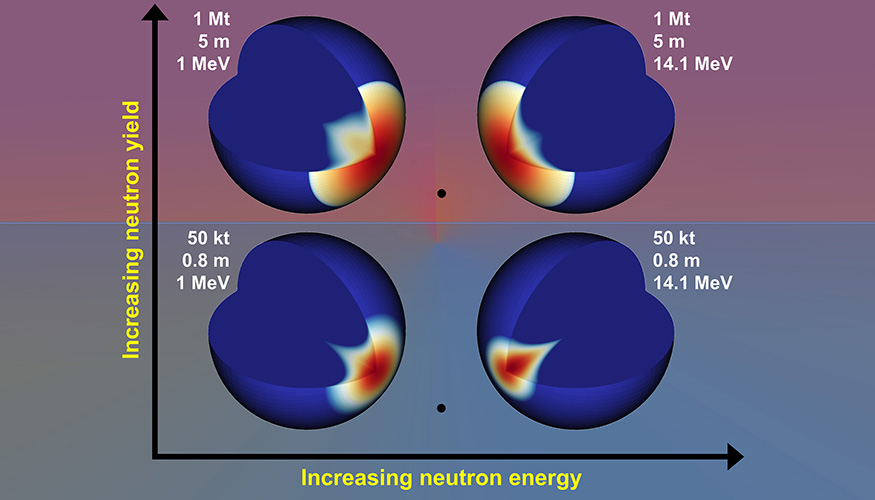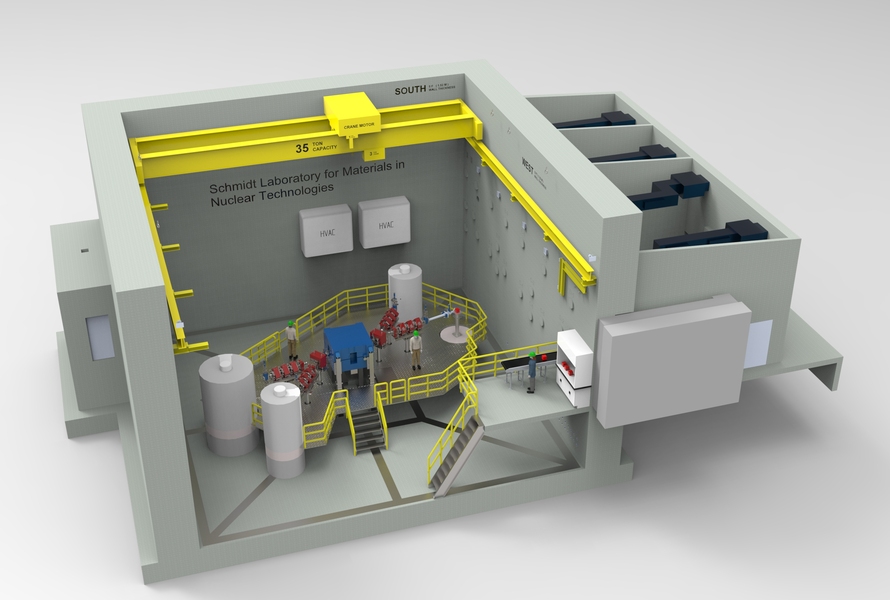In this illustration of the effects of two neutron yields (50 kt and 1 Mt) and two neutron energies (14.1 MeV and 1 MeV), the black dots represent the location of a nuclear device. Dark blue indicates where the asteroid remains solid, while all other colors show where material has been melted or vaporized. The illustration depicts asteroids with 0.8-m and 5-m diameters—much smaller than the 300-m asteroid simulated in the study—to enhance the visibility of the area of the energy deposition. Image: LLNL
A research collaboration between Lawrence Livermore National Laboratory and the Air Force Institute of Technology (AFIT) has investigated how the neutron energy generated by the detonation of a nuclear device could affect the path and speed of an asteroid on a collision course with Earth by melting and vaporizing a portion of the asteroid. The research, which compared the deflection caused by two different neutron energies—14.1 MeV and 1 MeV, representing fusion and fission neutrons, respectively—is described in an article published by LLNL on April 8.
The study: The researchers used simulations, featuring a 300-meter SiO2 sphere standing in as the target asteroid, and concluded that the energy deposited from the two neutron energies and two neutron yields studied would be distributed differently in the asteroid. Those differences affect both the amount of melted and vaporized matter and the speed with which that “blow-off debris” is ejected from the asteroid, changing the asteroid’s velocity.
The research was led by Lansing Horan IV, as part of a collaboration with LLNL’s Planetary Defense and Weapon Output groups during his nuclear engineering master’s program at AFIT. Coauthors from LLNL include Megan Bruck Syal and Joseph Wasem from LLNL’s Weapons and Complex Integration Principal Directorate, and the coauthors from AFIT include Darren Holland and Maj. James Bevins. Their research was recently featured in the journal Acta Astronautica.
The ultimate goal: Asteroid deflection isn’t intended to shatter an asteroid (that approach is called asteroid disruption). Instead, deflection keeps the object intact while slightly altering its orbit and speed.
“Over time, with many years prior to impact, even a miniscule velocity change could add up to an Earth-missing distance,” Horan said. “Deflection might generally be preferred as the safer and more ‘elegant’ option, if we have sufficient warning time to enact this sort of response. This is why our work focused on deflection.”
Having established that specific neutron energy outputs can alter asteroid deflection, further research could determine the optimal neutron energy spectrum to maximize the deflection, according to Horan.







